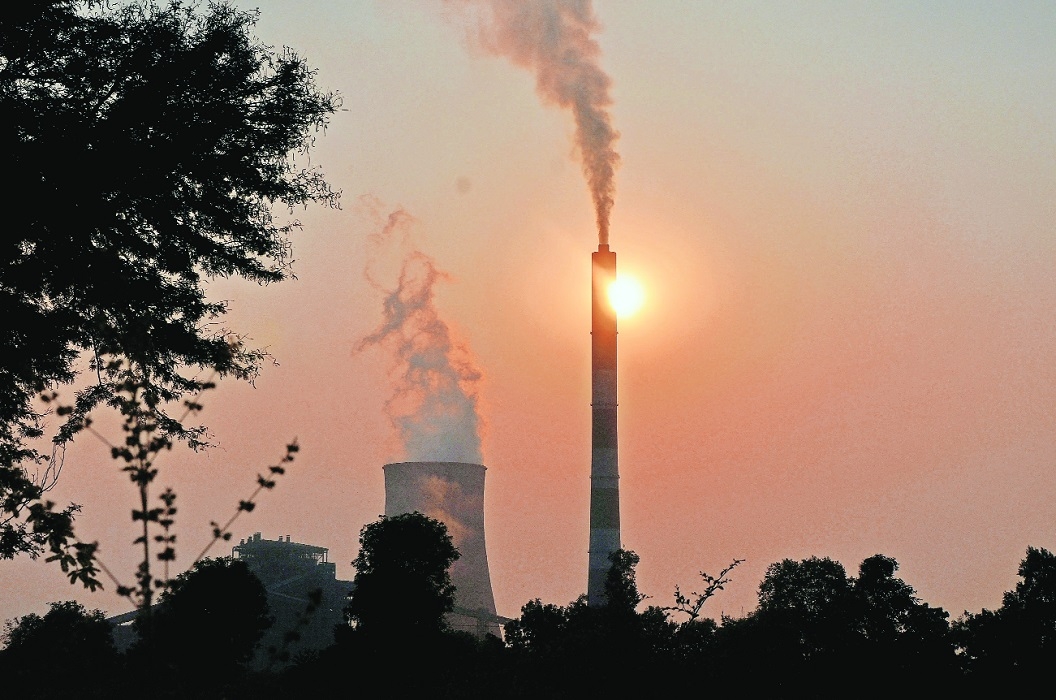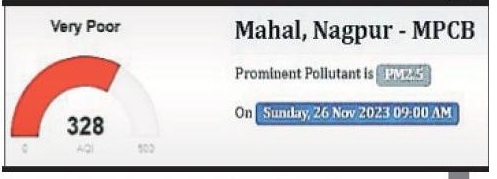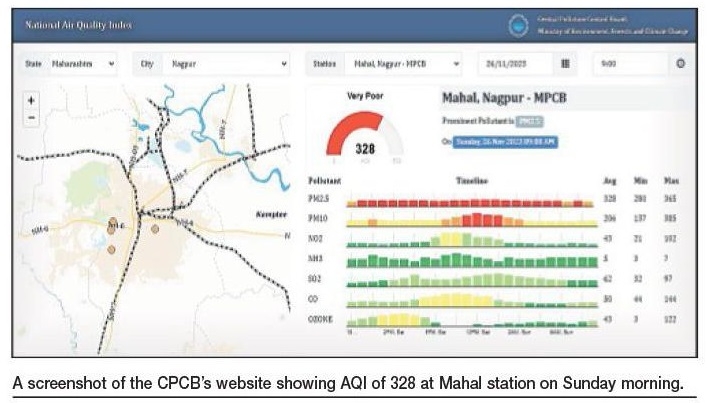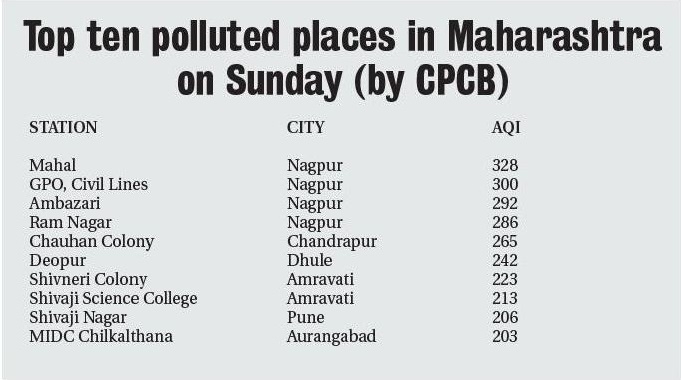Gas Chamber! 328 No Diwali now. Yet, city’s air quality is sinking. Why?
| Date :27-Nov-2023 |

Where will pseudo-green crusaders hide their face now? (Pic by Anil Futane)
By Kaushik Bhattacharya :

As air quality was steadily declining since one month, Nagpur city on Sunday saw the poorest air quality of the season in Mahal area with AQI at 328 mark. Since almost one month, the city has not seen even a single day when the air quality levels were ‘good’ or ‘satisfactory’.
However, the questions that prevail now for the Government and public are -- How is the air quality deteriorating even after Diwali when firecrackers are not being used? If firecrackers are not the only reason, then which
factors are responsible? Lastly, who is going to address and take the responsibility for the deteriorating air quality of the city?
Eventually, on Sunday, all four of Nagpur’s Continuous Ambient Air Quality Monitoring Stations (CAAQMS) -- Ambazari (292), Mahal (328), GPO (300), and Ram Nagar (286) recorded the worst air quality in Central India and Maharashtra.

The air quality of big cities like Mumbai, Pune, Nashik, Surat, Ahmedabad and Bhopal were better than Nagpur city.
With crossing the 300 mark AQI, Nagpur city is now competing with states like Delhi, Haryana and Bihar where the air quality during winters always remains ‘Very Poor’.
Ongoing cement road construction, other infrastructure projects, heavy traffic, domestic use of chulhas and stubble burning on the outskirts are the major contributors of poor air quality during the current winter season. However, Nagpur city is a lifeline for Maharashtra for power generation and the Thermal Power Plants also contribute to air pollution in the city.

There is a need to check the air pollution level in Koradi and Khaperkheda Thermal Power Plants in city.
Mahal, one of the most populated area in the city, recorded the worst ever Air Quality Index (AQI) 328 at 9 am on Sunday. On Saturday also, Mahal recorded ‘Very Poor’ air quality with 319 AQI, which was also recorded at 9 am. Similarly, General Post Office (GPO) based station in Civil Lines area, which is among the greenest patch of the city, recorded the second highest AQI with 300 on Sunday. Ambazari and Ram Nagar based stations also recorded the AQI at 292 and 286 level respectively. All four stations in the city recorded the ‘Very Poor’ air quality in the morning hours, whereas the air quality of all four stations registered above 280 mark throughout the day.
However, Mahal based CAAQMS recorded ‘Very Poor’ AQI of 321 at 12 midnight. Throughout the day, the AQI of Mahal remained above 310. The GPO observatory recorded the AQI of 296 at 12 midnight on Sunday and it started increasing from 6 am. GPO station touched the 300 mark at 12 noon. Both Ambazari and Ram Nagar stations also recorded the ‘Poor’ air quality throughout the day and the AQI remained above 280 mark in both stations.
As per the norms mentioned on CPCB website, AQI of 0-50 is ‘Good’ with ‘minimal impact’ on health; 51-100 AQI is ‘Satisfactory’ with ‘minor breathing discomfort to sensitive people’; 101-200 AQI is ‘Moderate’ with ‘breathing discomfort to people with lungs, asthma and heart diseases’; 201-300 AQI is ‘Poor’ with ‘breathing discomfort to most people on prolonged exposure’; 301-400 AQI is ‘Very Poor’ with ‘respiratory illness with prolonged exposure’; 401-500 AQI is ‘Severe’ that ‘affects healthy people and seriously impacts those with existing diseases’.
“Inversion of temperature in winter season is the main reason behind this high AQI. The cloudy weather in Nagpur added to the troubles for citizens on Sunday. Due to clouds, the dust is mixed with smoke and it turns into smog which causes pollution,” said Prof Yogesh Dudhpachare, Professor, Janata College.
Kaustav Chatterjee, Founder, Green Vigil Foundation also blamed the cloudy weather for this poor air quality in the city. “Cloudy weather is a major reason behind increased AQI in city. It increases during winter especially during night due to temperature inversion. The warm air traps the cool air and forms a kind of atmospheric lid. The vertical mixing of air happens within this layer, as a result the pollutants are dispersed back into the atmosphere,” said Chatterjee
“However, just 4 monitoring stations that are situated in close vicinity can not give a perfect picture of AQI of the entire city,” he claimed.